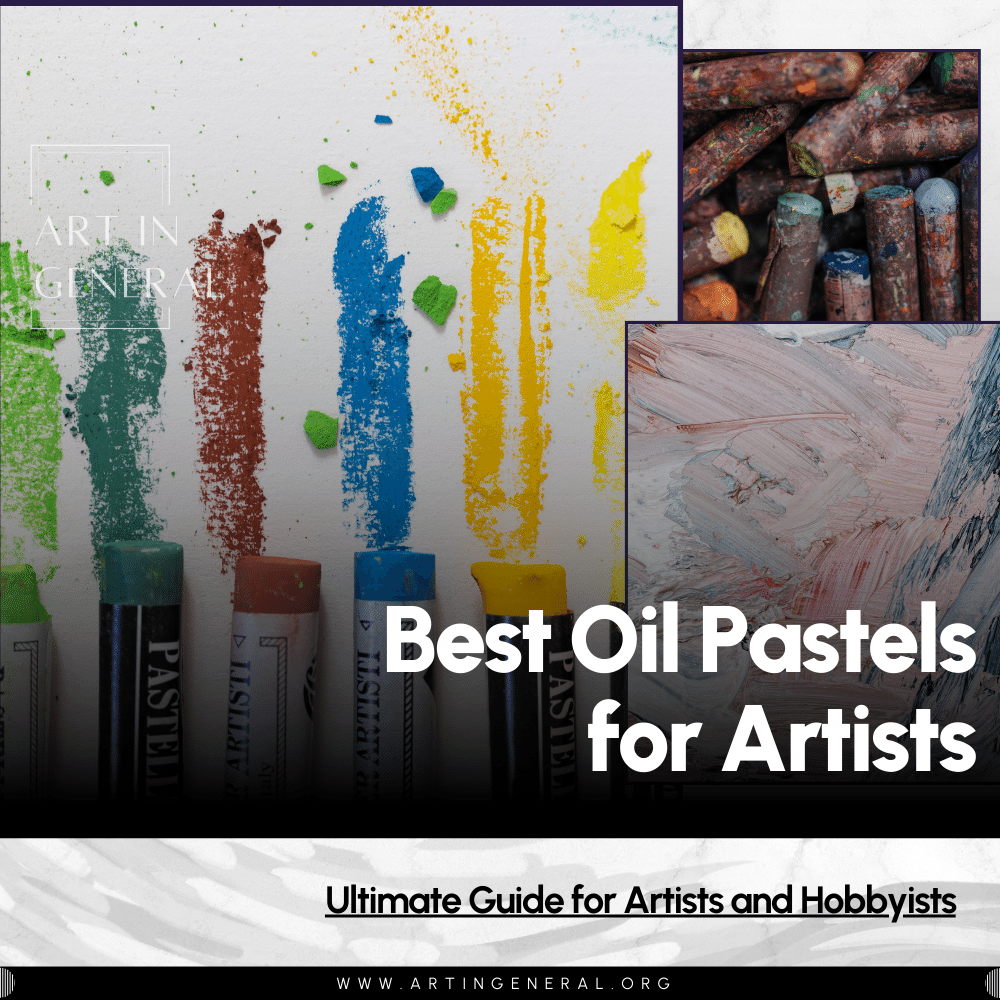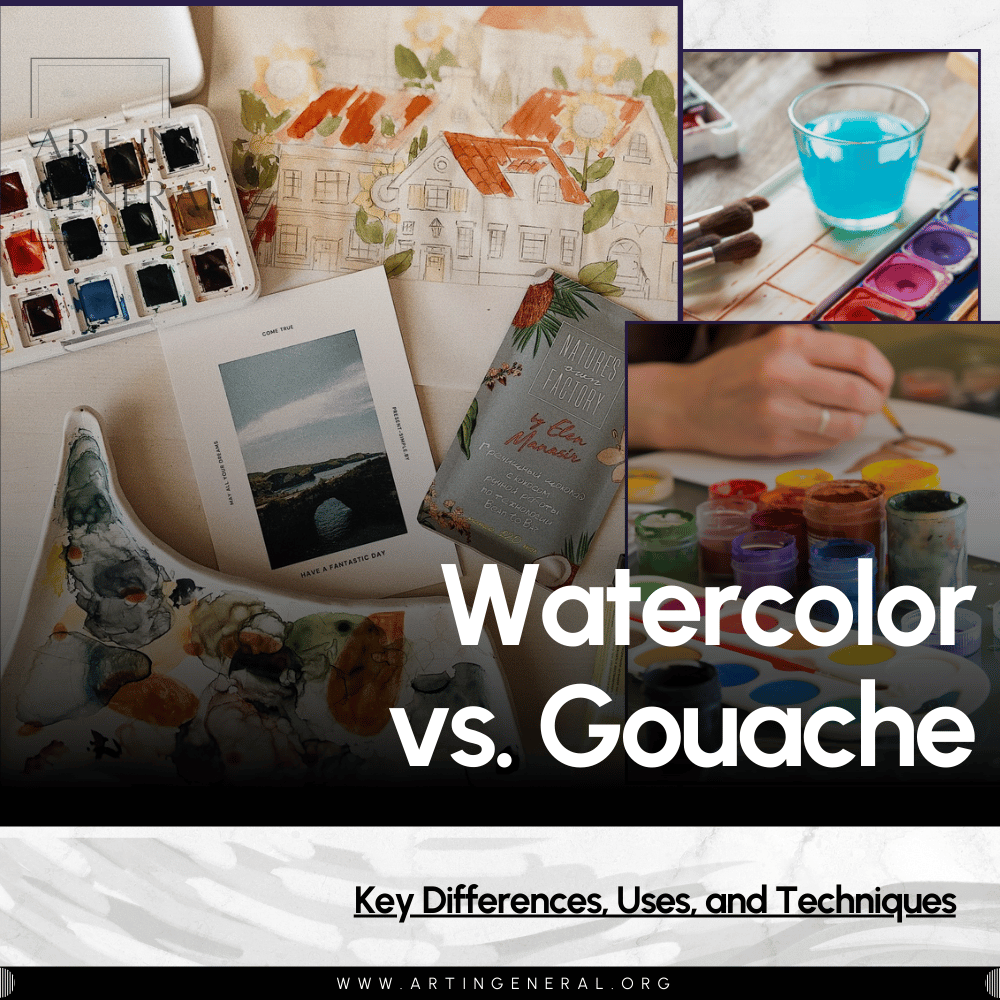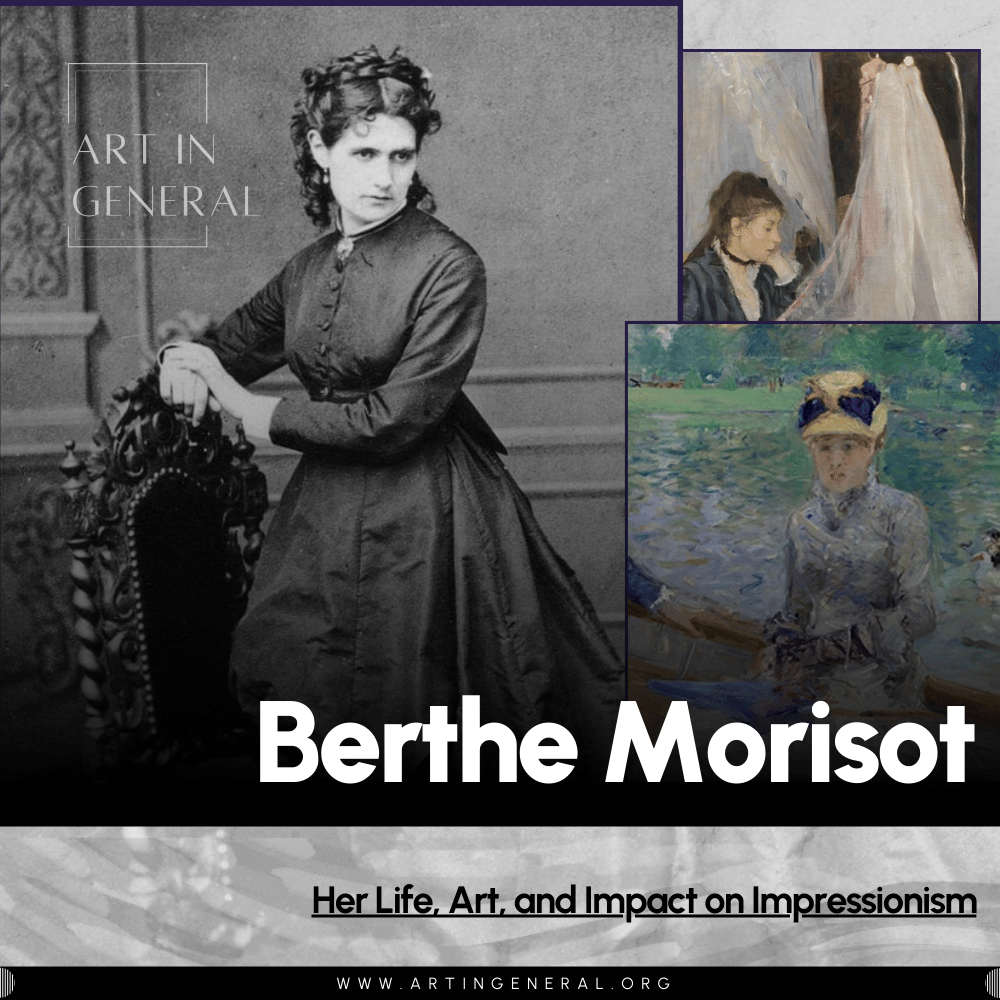
When it comes to pastels, there’s a lot more than meets the eye. Oil pastels and soft pastels may look similar from afar, but their textures, blending abilities, and applications couldn’t be more different. If you’re new to these mediums, the wide range of product names and descriptions can be confusing, leaving you wondering which is best for your art. In this guide, we’ll break down everything you need to know—what oil pastels and soft pastels are made of, how they’re used, which surfaces work best, and which one might be a better fit for your next project. Whether you’re a beginner artist looking to experiment or a seasoned pro seeking new tools, understanding these two mediums is key to mastering your creative process.
What Are Oil Pastels?
Oil pastels are a drawing and painting medium made from pigment, wax, and non-drying oils, the last ingredient being what makes them truly unique. Though relatively new—less than 100 years old—oil pastels have captured the hands and hearts of artists all over the world. Their smooth, buttery texture, ease of use, portability, and bold, vibrant colors make them one of the best mediums for anyone looking to get started in art. Suitable for artists of all ages and skill levels, oil pastels are one of the few mediums you can use without brushes or solvents so you only need your fingers to create amazing art with them.
What Are Oil Pastels Made Of?
Oil Pastels are made of pigment, non-drying oils, and wax.
- Pigments are a finely ground colored powder that comes from various natural and synthetic compounds and provides the bright, vivid colors we see in most art mediums.
- Non-drying oils like mineral oil, coconut oil, safflower oil, and linseed oil (in its non-drying form), are what give oil pastels their unique texture, allowing for that smooth application and blending, but also make them prone to smudge unless sealed with a fixative because of their non-drying nature.
- Wax is the binder that holds the pigments and oils together and gives the oil pastel sticks structure and smooth consistency. The most common waxes used in the pastel-making process are paraffin wax and beeswax.
- Fillers and Stabilizers like Kaolin Clay, Calcium Carbonate, Stearic Acid, Hydrogenated Castor Oil, EVA, and BHT are also common ingredients in the pastel-making process, helping improve the consistency, and firmness, preventing the oils from oxidating and improving the shelf life of oil pastels overall.
Are Oil Pastels Better For Beginners?
Yes, Oil Pastels are one of the most beginner-friendly mediums, as they are easy to use, very forgiving, relatively affordable, super blendable, portable, and of course, non-toxic.
Oil Pastels don’t require any additional supplies, like solvents, water, brushes, or palettes. They can be used straight out of the box and blend easily with your fingers. Although slightly messy, they clean up easily with some soap and water. They also don’t need a special surface, as they can be used on multiple surfaces like wood, canvas, glass, metal, and paper. We only recommend you use a rather thick paper with them so you can blend to your heart’s content.
What Are Soft Pastels?
Soft Pastels are a popular drawing and painting medium, known for their amazingly intense colors and velvety texture. They are made primarily of pure pigment mixed with a minimum amount of gum arabic—the binder—and shaped into sticks.
Unlike oil pastels which have a creamy texture that feels like a mix of a crayon and a lipstick and can be used on pretty much any surface, soft pastels have a dry, powdery finish, and need specialty paper to reach their full potential.
Since soft pastels are made of pure pigment with almost no binder, they have an amazing color payoff and can be used for pretty much everything, from sketching to amazingly detailed paintings. They are easy to layer and blend (on the right surface) and are the preferred medium of many professional artists all over the world.
What Are Soft Pastels Used For?
Soft pastels are amazing for painting landscapes, portraits, abstract art, and realistic artwork. They make excellent figure-drawing companions and are also amazing for sketching, concept art, and illustration. In addition to their traditional art uses, soft pastels are also great for crafts, coloring clay, fabric, or wood.
Are Soft Pastels Difficult To Work With?
Yes, although soft pastels are not impossible to use, they can be quite challenging to handle, especially for beginners and artists unfamiliar with similar mediums. Due to their powdery nature—particularly in high-quality soft pastels—using the wrong paper can lead to smudging, uneven application, and a lack of control, causing the pigment to dust off easily and making it difficult to build layers. Additionally, soft pastels are on the expensive side, given the high pigment amount in them and the need for specialty paper, they are not as cost-effective as other mediums and can be considered not as accessible for beginners, students, and artists on a budget.
The Key Differences Between Oil Pastels and Soft Pastels
Oil Pastels and Soft Pastels are two very similar yet completely different mediums, and while they are usually confused by inexperienced eyes, they have very different characteristics that set them apart:
Texture and Feel
Oil Pastels have a creamy, waxy feel. They lay down beautifully on pretty much any surface from paper to wood and glass. Although they are shaped like sticks and visually might look a bit like crayons, the high-quality ones resemble lipstick in texture, application, and softness.
Soft Pastels are dry and powdery, they are also shaped in sticks, although some are shorter than others due to their fragile and prone-to-breaking nature. They also apply beautifully, although only on textured, specialty paper, as the powder slides right off any other non-grainy surface.
Blending Techniques
Oil Pastels smudge easily and the warmth of your fingers is more than enough to mix, blend, and create, however more advanced artists can use other tools and techniques for blending when looking for a particular result or effect. The most common and popular techniques are direct blending, light pressure blending, finger blending, oil blending, scumbling, and stippling. These techniques involve the use of your fingers, and some other basic tools like blending stumps, tortillons, color shapers, oils, solvents, and brushes for the more advanced blending techniques.
Soft Pastels are best when blended with fingers, however, the texture of the specialty pastel paper can be too abrasive for fingers, so a sponge or blending tools like a blending stump, a color shaper, or a chamois are always a must. More than blending, soft pastels rely heavily on layering and color building, which is why the paper choice is so important, however as an additional technique you can also use alcohol to create washes and underpaintings.
Surface Compatibility
Oil Pastels can be applied and worked on several surfaces, including paper, cardstock, wood, glass, metal, etc. They work best on thick paper choices like the ones made for watercolor and mixed media use rather than thin, copy paper, and when using solvents and oils, canvas and wood are recommended due to their durability.
Soft Pastels can only be used on textured paper, and not any textured paper but specialty paper made for pastels only, as the smooth or rough texture of other papers will lead to excessive dusting, or unevenness and patchy areas. Sanded paper (which is also specialty paper for pastels) is another option, and the best in the opinion of many experienced artists, however, it is also more expensive and rarer than regular pastel paper.
Longevity and Preservation
Oil Pastels don’t dry, they remain fresh, workable, and prone to smudging and damage until they are sealed with a fixative. While they are not as prime to smudging as soft pastels, they still need to be sealed or protected when storing and framing.
Their longevity depends on the surface used, the pigment’s lightfastness, and the oils’ and wax quality, however, it is well known that paintings made with oil pastels can last decades and are not prone to fading or losing color.
Soft Pastels are extremely fragile, and dusty, and need to be immediately sealed with a fixative when the art is finished. You even might need to use a “workable fixative” in between layers to set the colors and allow additional work on top. Their fragile nature makes them prone to losing pigment through the years, as the powder falls from the piece when the fixative loses its effect, however, when properly stored and managed, a painting made with soft pastels can last centuries.
Which Is Easier To Blend, Oil Pastels Or Soft Pastels?
When talking about blending, soft pastels are technically easier to blend than oil pastels. Their powdery consistency makes them very easy to blend and you can easily create beautiful gradients and color transitions with your fingers, a blending stump, or a sponge (on the right paper, of course). On the other side, oil pastels offer a bit more resistance due to their creamy consistency which you need to “spread and smudge” over your painting surface.
Are Oil Pastels Or Soft Pastels Better For Beginners?
When talking about art mediums for beginners, Oil Pastels over Soft Pastels is the answer every time. Not only are oil pastels more accessible in terms of price, but they can also be applied to almost any surface—paper, canvas, wood, or even fabric. They are easy to use, non-toxic, and forgiving, making them perfect for those just starting out.
Unlike soft pastels, oil pastels don’t require advanced techniques, special papers, or concerns about dust inhalation. Their smooth, creamy texture allows beginners to explore color, shading, and blending techniques with confidence, without the complications of more delicate mediums.
FAQs
Here are some of the most frequently asked questions about soft and oil pastels:
What Is The Difference Between Oil And Soft Pastels?
Oil Pastels and Soft pastels are two very different mediums, and while they might have a similar appearance from afar, the only thing they have in common is the high color intensity they offer. Here are some of the main differences between them:
Texture:
- Soft pastels are made of powder pigment with a binder, making them dry and chalky.
- Oil pastels are made of pigment mixed with non-drying oils and wax, making them creamy and smooth.
Blending:
- Soft pastels are easier to blend and are amazing for creating smooth gradients.
- Oil pastels require more elbow grease to blend and can create nice textured effects.
Surface Compatibility:
- Soft pastels work best on textured paper (specialty paper or sanded paper).
- Oil pastels can be used on almost any surface (paper, canvas, wood, etc.).
Residues and Toxicity:
- Soft pastels produce a lot of dust during use which can be harmful to your health in the long run.
- Oil pastels do not create dust and are non-toxic, although some oil pastels might leave small waxy residues that are easy to clean off.
Durability:
- Soft pastels require the use of a fixative to prevent smudging in finished work, and sometimes in-between layers to be able to build color properly.
- Oil pastels don’t require a fixative but will remain fresh and prone to smudging with a tacky feel to them so a fixative is advised for finished work.
Application:
- Soft pastels require more delicate handling, they are prone to break and wear off quite fast.
- Oil pastels are more forgiving and easier for beginners, they can be used straight off the box and don’t require and last a bit longer than soft pastels.
The naming and listing used by some brands might be a tad confusing, with soft oil pastels, extra soft oil pastels, oil pastels, pastels, soft pastels, and hard pastels being some of the chosen names and product descriptions found online. And since oil pastels and soft pastels share a similar appearance from afar, inexperienced eyes can easily get them confused so here is a small description of what they mean and what you can expect:
- Oil Pastels: The creamy and smooth medium we all know and love. Brands that have “Oil Pastels” in their name description are usually on the harder/firmer side or are the ones made for children of school age. This applies to most brands, with the exception of artist-grade brands like Sennelier and Caran d’Ache.
- Soft Oil Pastels / Extra Soft Oil Pastels: Some brands label their oil pastels as “soft” or “extra soft,” referring to the texture. These oil pastels might be student or artist-grade and have an even creamier consistency and blend more easily than regular oil pastels. The “soft” or “extra soft” labeling is also used to differentiate them from the brand’s lower-quality or harder oil pastel options, which may have a firmer texture and be less blendable.
- Soft Pastels: Also known as chalk pastels, these are the dry, powdery, and highly blendable medium we talked about in this guide. They work best on textured paper and are ideal for creating soft gradients and smooth transitions. The “soft” labeling usually refers to pastels with less amount of binder or higher quality ones.
- Hard Pastels or Chalk Pastels: These are firmer versions of soft pastels that offer more precision and control, but they can also be lower-quality pastels with more fillers and binders. Hard pastels can also be labeled as soft pastels by some brands looking to sell more, one easy way to identify them is by their shape. Hard Pastels are usually shaped like average-sized rectangular sticks while soft pastels are usually cylindrical and shorter, almost like a half-stick.
- Hand Made/Hand Rolled Soft Pastels: These are soft pastels of higher quality, usually softer and more expensive than other variations. They are also shorter and shaped like imperfect cylinders due to them being handmade.
Can I Mix Oil Pastels And Soft Pastels?
You can certainly experiment and mix both mediums, however, they don’t always work well together and you can end up with very messy results. If you’re willing to experiment we recommend starting with a well-spread, thin layer of oil pastels and then layering soft pastels on top, as oil pastels will most likely remove all the pigment from the soft pastels because of their creamy texture.
Plus since the fixative for each medium is different, you might end up with unintended effects. Fixatives designed for soft pastels can darken or alter the colors of oil pastels, and they won’t fully set the oil pastels due to their oily composition. On the other hand, using a fixative meant for oil pastels can create a glossy or uneven finish on your soft pastel layers, or even prevent the pastel pigment from adhering properly.
Do Oil Pastels Require A Fixative Like Soft Pastels?
Yes and no, while it’s not mandatory a fixative is advised for work you want to preserve. In case of sketches or work you want to store, glassine or wax paper is enough to protect the oil pastels from smudging or staining other pieces.
Soft pastels on the other side do require a fixative as they are extremely prone to smudging, losing pigment when handled incorrectly (dusting), and staining other pieces. In some cases, you might even need to use a workable fixative in-between layer to preserve the colors of the base layers and keep adding more.
How Long Do Oil Pastels And Soft Pastels Last?
Soft pastels are known to last for centuries, while oil pastels are proven to last for decades, although this is also because oil pastels are a much younger medium than soft pastels and have only been around for less than 100 years. The longevity of any medium will also depend on the quality of the pigments and materials used in the making process, as well as the surface used for the painting.
Are Soft Pastels Messy To Work With?
Yes, they are very soft and produce a lot of dust residue which easily stains not only fingers but clothing and any surface they come in contact with, and although the dust is fairly easy to clean off, it can be very challenging for beginners to control.
Which Is Better For Portraits: Oil Pastels Or Soft Pastels?
Soft pastels are better for portraits. In the hands of an experienced artist and the right paper realistic masterpieces can be created with ease. Oil pastels are more challenging to blend and while it’s possible to make beautiful portraits with them, achieving subtle skin tone variations and working on details it’s not as easy as with soft pastels, even in the hands of more experienced artists.
What Paper Should I Use For Oil Pastels Or Soft Pastels?
For Oil Pastels:
For Oil Pastels you can use Textured Paper (Pastel Paper), Mixed Media Paper, Canvas Paper, thick Bristol Board, and Watercolor Paper. Here are some recommended brands and products:
- Strathmore 400 Series Oil Pastel Paper
- Canson Canva-Paper
- Fabriano Mixed Media Paper
- Canson XL Series Mix Media Paper
- Arches Oil and Acrylic Paper
For Soft Pastels:
For Soft Pastels you can use Sanded Pastel Paper, Velour Paper, and Pastel Paper with Tooth. Here are some recommended brands and products:





Leave a Reply